colorful, attractive and entirely built from Lego bricks: here’s the “Educational Memory Musical Arduino” game realized by the freshman students of Gymnasium Vukovar!
“EMMA”, the innovative version of the famous arcade game “Touch me”, first released by Atari Inc. in 1974 and later as a handheld game in 1978, was at #MFR2020! Would you like to learn more about it? Read the interview with Davor Sijanovic , mentor of the Vukovar High School students who realized the project!
Q. Hello Devor, we are so glad to virtually meet you again. Let’s break the ice by introducing you and your students!
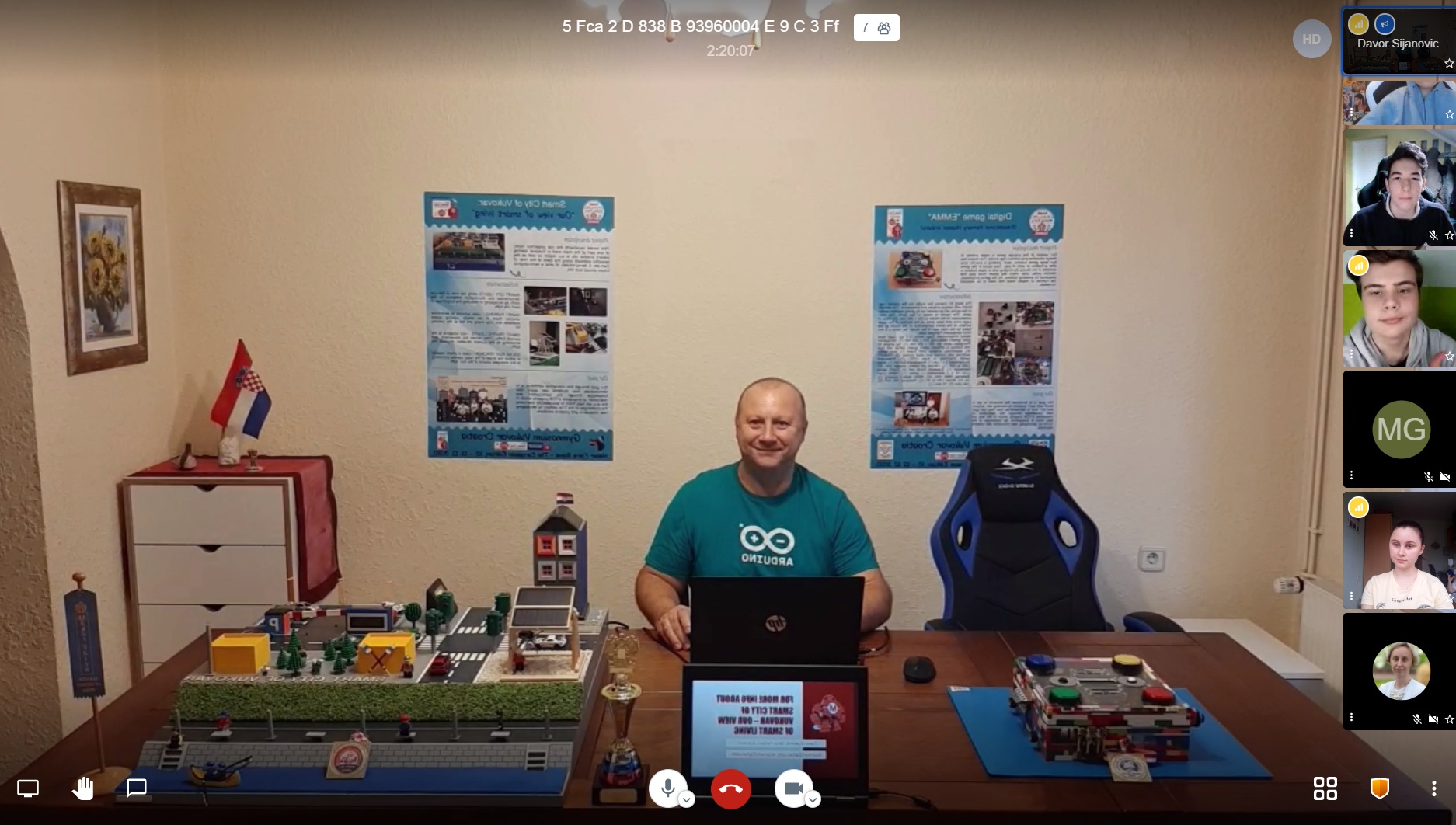
A. We come from a small town of Vukovar in eastern Croatia situated on the beautiful banks of the Danube river. Our project team is called “Generation Now team” and the high school we attend is called “Gymnasium Vukovar“. Project team members are: me (Davor Sijanovic, mentor), Sanja Pavlovic Sijanovic (mentor), Lara Sijanovic (student), Karlo Zutic (student), Fran Hutinec (student), Ema Stankoski Hrgovic (student). Gymnasium Vukovar was established in 1891 and is a secondary school (gymnasium) in Vukovar in eastern Croatia. The study program at our school is divided into three specialized fields with the first one being general social science, the second is STEM, and the third program is mostly oriented towards foreign languages studies. Our project team is a first year of high school (freshmen) attending STEM program. The systematic implementation of ICT and new high tech technologies into the learning process, after – school and out of school activities, and creating a digital learning concepts is one of the fundamental activities we use to enhance the entire educational system by implementing the idea of new curriculum called: “The school for life”.
During the period from 2016 to 2019 we have participated in several and innovative projects such as “e – Skole” by Croatian Academic and Research Network (CARNet). This project really and truly opened many doors and possibilities for us by enabling participation in many great activities and other projects. For 24 months during the length of this project, we acquired strong and lifelong connections with great people, accomplished outstanding collaboration on the national level as well as the International. Little by little, piece by piece we were becoming a part of the World of STEM and innovative projects and activities. This gave us a courage and the strength to participate in many festivals, competitions, and exhibitions, such as project called “Generation Next” and “Generation Now” by Croatian Telekom and Institute for Youth Development and Innovativity. This type of STEM education contributes to creating unique solutions by developing strategies for inventive thinking and logical problem solving. STEM Education not only opens the space for students to develop critical thinking and contributes to innovative solutions, but also prepares them to work in completely new areas. Even for students who do not choose a career in one of the STEM areas, skills acquired by STEM education can be implemented in almost every career.
Q. Great to hear that! And what about your project “EMMA”? Where does it come from?
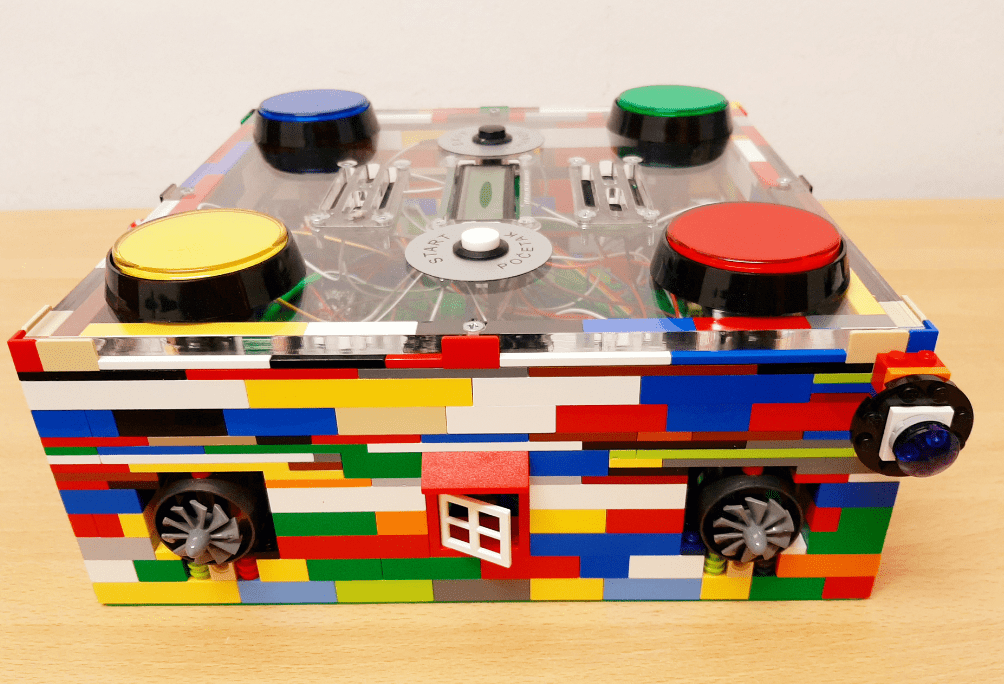
A. To link educational, didactic and entertainment components, we decided to re-design the famous game from 1974 entitled: “Touch me” prepared by Atari. Later in 1978 Ralph H. Baer and Howard J. Morrison invented a new version of the game: “Simon”. “Simon” has been designed so that it is always coherent, whatever the order, and consisting of the main triage in the second inversion. Our version of this popular game has been built entirely from very attractive and colorful Lego bricks. The device has four major color keys, each generating one tone after activation or starting of the game. One round in the game is that the device illuminated one or more buttons in a random order, after which the player must reproduce this sequence by pressing the buttons. As the game is on track, the number of seized tones to be repeated is increased.
Q. What are the materials, technologies and machines used to project and realize it? And why “Emma”?
A. The basis for making this model are the original Lego bricks with various shapes and dimensions. The strength of the model has been achieved by gluing in certain parts of the bricks. The model “Emma” is made from two main parts. The main construction of the model is 250 × 250 mm. It’s made of Lego brick and base plate. The top (cover) was made from the 6 mm thick transparent Plexiglas plate.
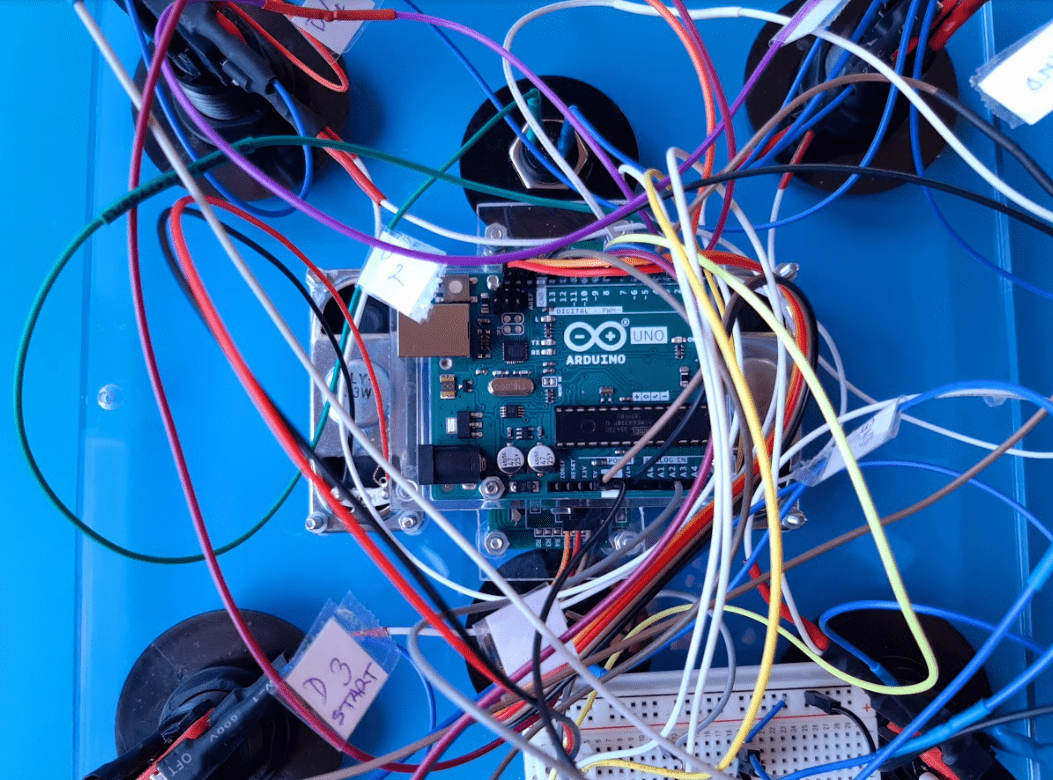
Model infrastructure:
- Lego bricks (1-2 kg),
- Lego base plate 250 x 250 mm (1),
- Transparent Plexiglass cover top 250 × 250 mm (1),
- Big arcade 60 mm buttons in different colors (green, yellow, red, blue (4),
- Electronics,
- Arduino UNO board (1)
- Push-button switches with current and short contact (2)
- ON&OFF switch 27x21mm in 4-pin DPST (1)
- Protoboard double-sided 3 x 7 cm (1)
- Breadboard 6×8 cm (1)
- Micro USB to DIP (1)
- Lithium ion battery charger and JST connector (1)
- Speakers 70×30 mm (2)
- UART series LCD 16 × 2 characters — yellow (1)
- 18650 Li-ion Batteries 2900 mAh (2)
- 18650 battery housing (1)
- DC-DC Boost 1-5V to 5V (1)
- Resistors 100 ohm (6), 10K ohm (3), 1K ohm (1)
We were brainstorming for quite some time on how we would name our redesigned digital game. As I mentioned above the game in previous versions had names such as Touch me, Simon, Arcade game, but our final decision regarding the name involved everything that the game is all about.
Therefore, “EMMA“ is an abbreviation for Educational Memory Musical Arduino game.
Q. You shared with us the 8th Edition of Maker Faire Rome: what did it mean for you and your students?

A. This is the second year in a row since Gymnasium Vukovar actively participated in presentation, exhibition, and promotion of the Maker Faire Rome – The European Edition through conducting an interesting live streaming presentation of our projects, thus contributing to the exchange of experiences of stakeholders in the field of STEM, vocational and lifelong learning throughout Europe and beyond. Participation at the Maker Faire Rome is a proof that learning throughout life has fundamental importance for employability and personal development, where quality education is the basis for the development of student creativity and innovation.
Q. #MFR2020 went digital and online: could you easily interact with the public, visitors, and other makers?
A. During the three days of the fair, 11th – 13th December 2020, Gymnasium Vukovar students were available every day to numerous visitors through live streaming. Within one main channel for live streaming, 300 stands were organized in 9 theme pavilions, of which the Education – kids Pavilion – young makers – schools were intended for schools.
Vukovar high school was the only participant from the Republic of Croatia. In addition to the active part, 250 conferences, workshops and education for exhibitors and visitors have been organized.
Q. The Vukovar High School presented its projects at Maker Faire Rome for the second year in a row: what differences have you noticed between taking part in a “physical” fair and in a virtual one?
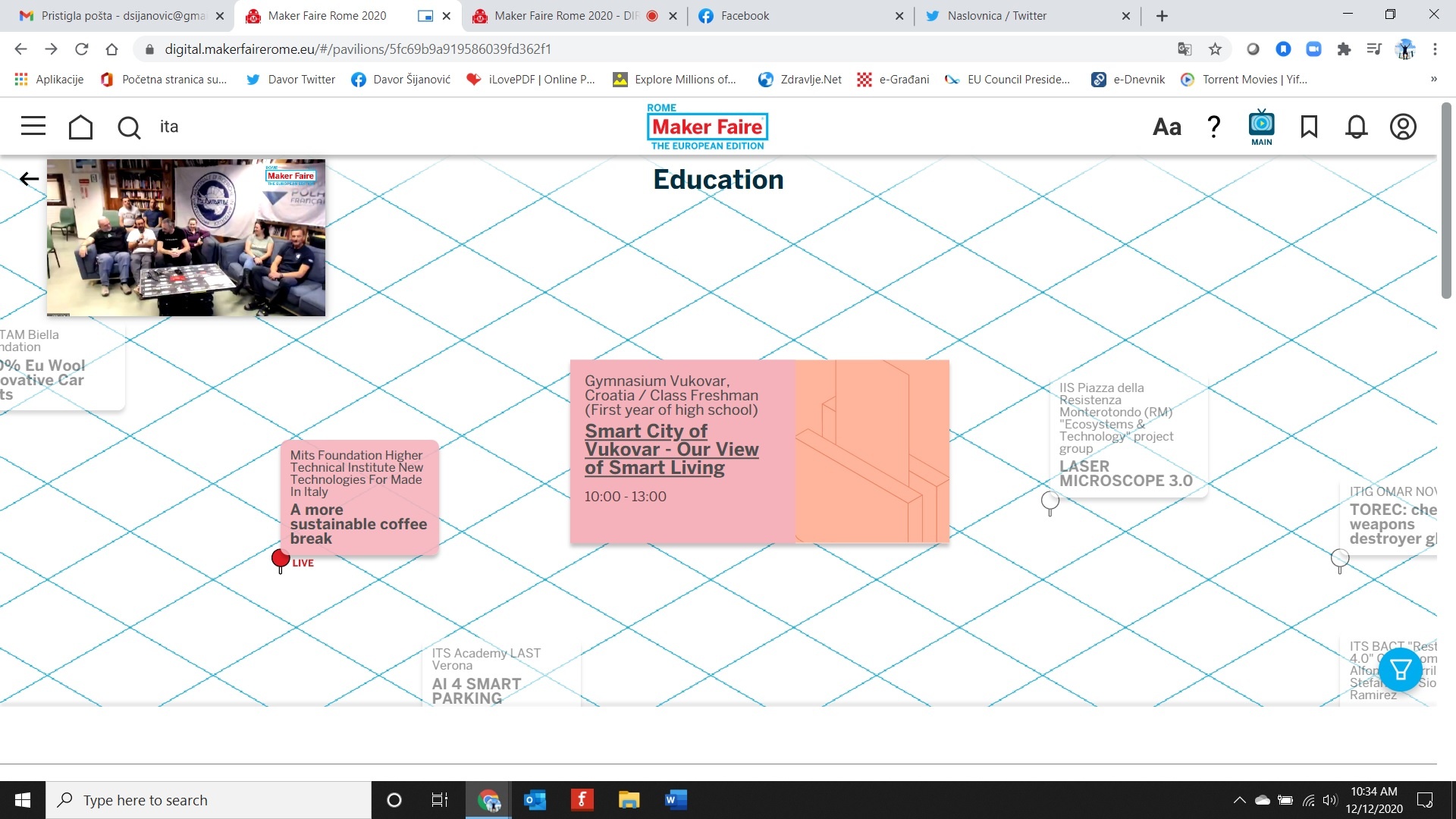
A. Participating at Maker Faire Rome in 2019 we started our journey on October 16 and by October 20 we gained priceless experiences, proudly presenting our project promoting our school, city, and Republic of Croatia. It was hard, demanding, but extremely exciting. All communication was conducted in English, and all three days were organized from 10 to 19 hours. Numerous events were extremely dynamic, so that in our pavilion events were exchanged in the exhibition areas of Open lab, Fablab, House of Drones, attractions, Show and Teaching and kids islands. Visitors had at their disposal 7 pavilions: re-think, learn (pavilion where we also exhibited in school and young makers), Create, discover, make, Research and Agora. The visitors were able to see the latest products, numerous inventions, startups, the use of artificial intelligence and robotics and several interesting contests. We were impressed with the energy of this city, the Italian temperament and openness of people, so we could conclude that Rome is a way of life and indeed the center of the world. The eternal city gave us thousands of wonderful details, experiences, knowledge, and views that we will remember forever.
This year, 2020, the European Faire dedicated to innovators migrated all submitted projects to an online platform so that all exhibitors can make their works universally and globally accessible to all. Among the many changes caused by the pandemic, many innovative solutions were found in the field of digital technology as well as at the fairs. The organizers of the Maker Faire Rome – the European Edition faced the question of how to find a platform and interface that will effectively enable interaction between numerous exhibitors and participants. They have chosen a path of complete digital reversal by providing a platform available Worldwide after the initial registration, which then enables exploration of all content of the fair, including profiles of each exhibitor, their projects, as well as conferences animating the event. The interface was developed by Dotdotdot in cooperation with Milan’s OpenDot Laboratory, and it is inspired by the world of Games with the aim of reconstructing fluid and efficient interaction, directing visitors to content of interest and enabling them to connect directly with the authors of the project.
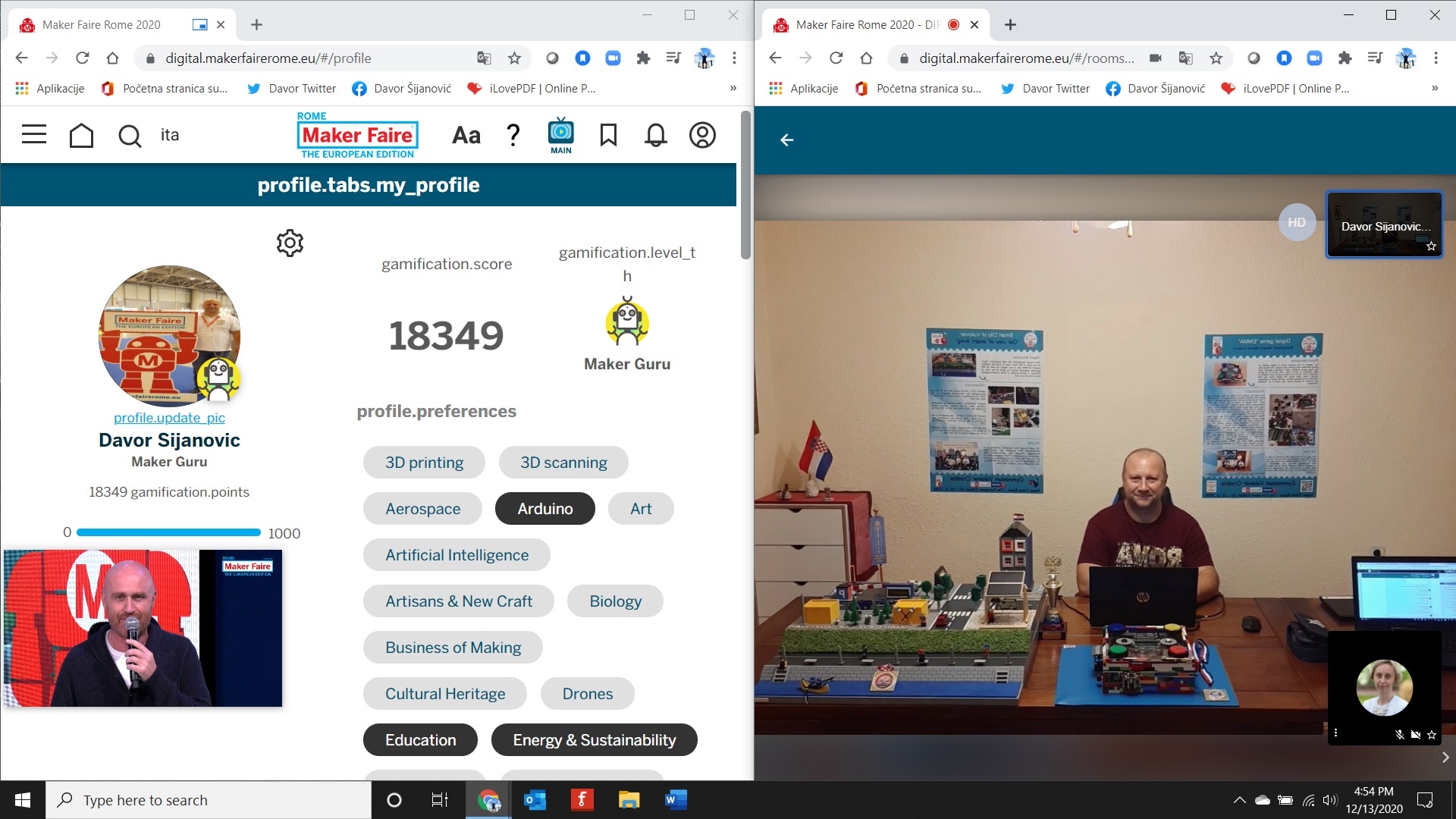
Virtual Maker faire Rome fulfilled all expectations this year as an ideal place to discuss the most innovative present and the planned future. This year, although we did not travel to Rome, Maker faire Roma showed us numerous inventions, startups, the use of artificial intelligence and robotics, inspirational stories and many interesting content, giving us a view of the future by phone, tablets or computer. Although this year’s tour of famous ancient buildings has not been completed, we will try to enjoy baroque architecture, impressive churches, interesting squares and tall medieval streets, we will give our best to make, submit and participate in a Maker Faire Rome next year which we believe will be organized live! Going to the eternal city is certainly a strong additional motivation!
Q. How could you involve your students in realizing “Emma”?
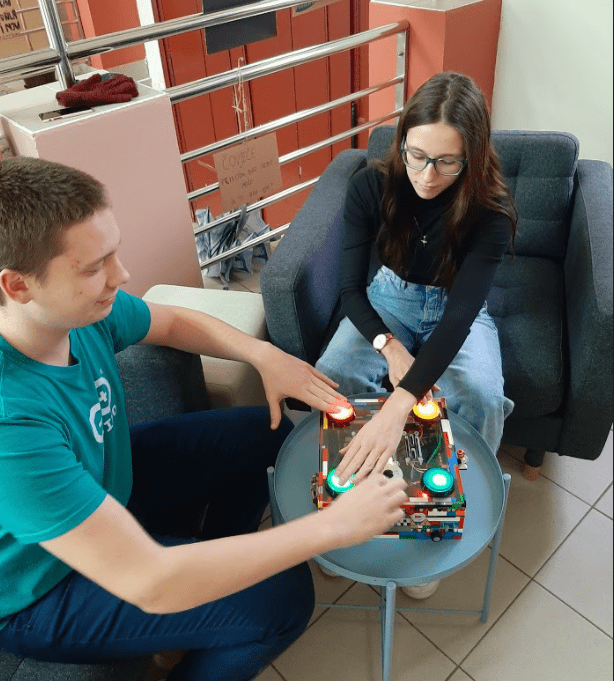
A. All members of the project team participated in the construction and installation of Arduino UNO board and all other electronic components for the final appearance of the digital game “Emma”.
Besides programming, drawings are made for the appearance of the Plexiglas main load plate, which contains Arduino board, start, and play buttons and loudspeakers. The cutting of the Plexiglas plate according to dimensions and design is performed using a laser cutter. After connecting all parts on the lower bearing structure, the main transparent Plexiglas top cover is placed, representing the load bearing part of the entire structure. During the production of all parts, deficiencies are removed, corrections and adjustments have been made. In the final phase, the project team members programed Arduino codes on their computers for launching the “Emma” game. In the last phase, except programming, all the necessary parts were made to present the digital game as a whole and complete functional model.
Q. Are you and your students working on something new? As a teacher, but also as a maker, what kind of advice would you give to all your creative students who have brilliant ideas in their mind and would like to turn them into reality?
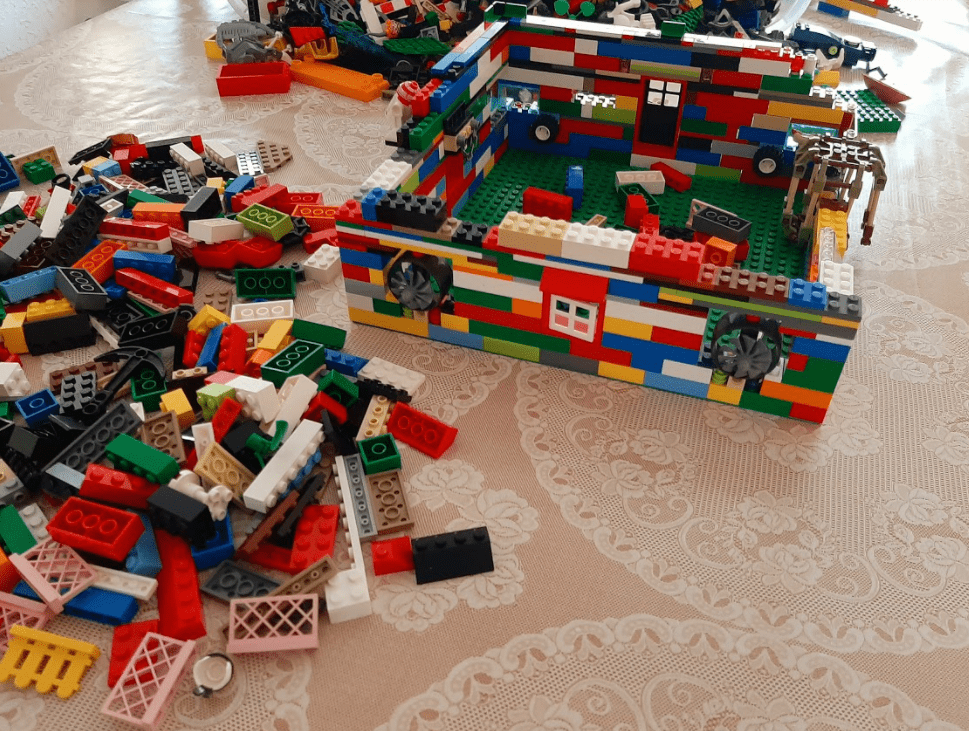
A. Of course, we are working on new projects for the next year but gathering and working physically in school is a much more difficult since our school went online at the end of October 2020. Sanja and I give the students assignments through the videoconference using Zoom or Skype and that’s the only way to get thing done until we return to school. We hope that by next spring the situation with the pandemic will improve and that all of us will be able to meet physically in real life.
Participating in all these projects, exhibitions and competitions mentioned above and by our own example, we wanted to send a message to all the students and the young people that regardless on the excuses in the beginning, such as lack of an experience, lack of support and lack of knowledge, as well as being from a small school, small city, and a small country, and by having the initial fear of defeat or failure from other schools at the competitions, that they should prevail all the obstacles; and to the contrary, adopt them as the additional motivation to build a strength for the first step into the unknown and unpredictable, because what counts the most is the goodwill and the great idea. Great ideas initiate changes, and the people with ideas are the ones who change the World to be a better place for living. And truly: “Every courageous idea in the beginning looks crazy” (Johann Wolfgang von Goethe), because creativity and innovativity demand a step from known into the unpredictable, but being a human being, we intuitively know that this is the thing that will lead us to reach desired goal.
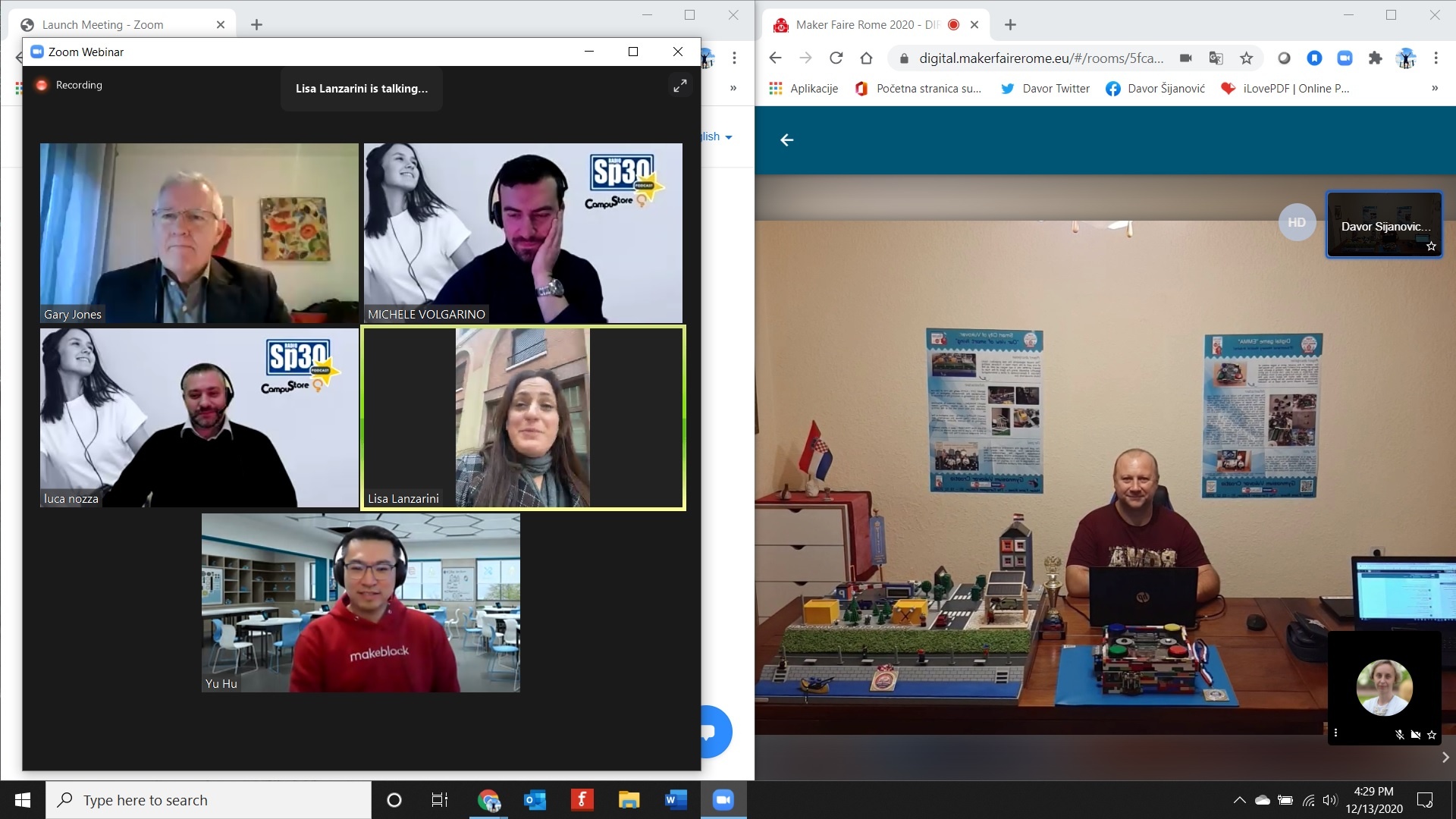
Thank you so much Davor for sharing your experience with us at #MFR2020 and for letting us a little bit more about you and your projects! We really hope to see you again next year, in Rome!
Would you like to explore EMMA? Watch the video presentation here!
Did you miss the last edition of Maker Faire Rome? Discover #MFR2020 Reloaded! Our digital platform is now live again: don’t miss the chance to visit our virtual stands!


















































































